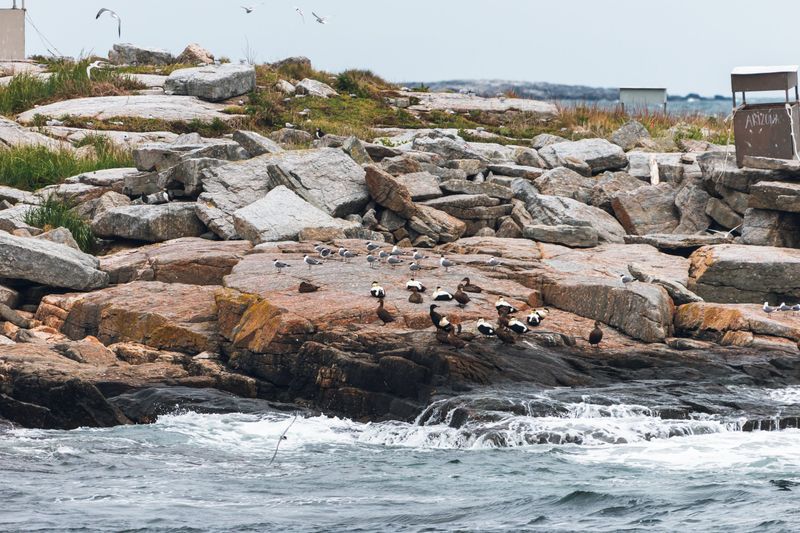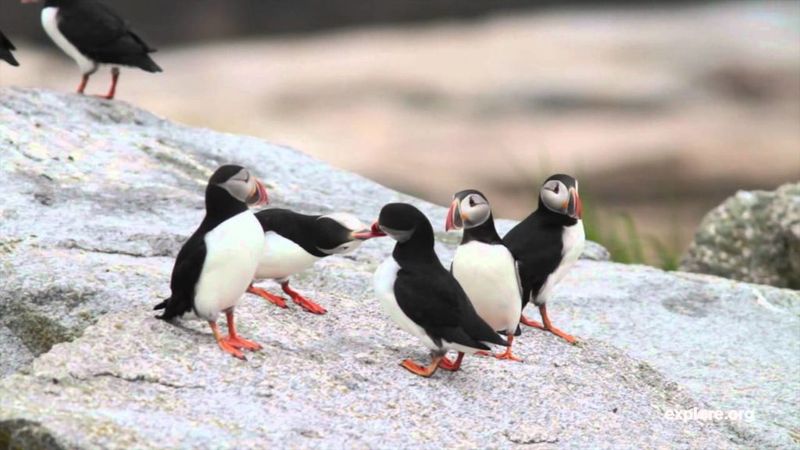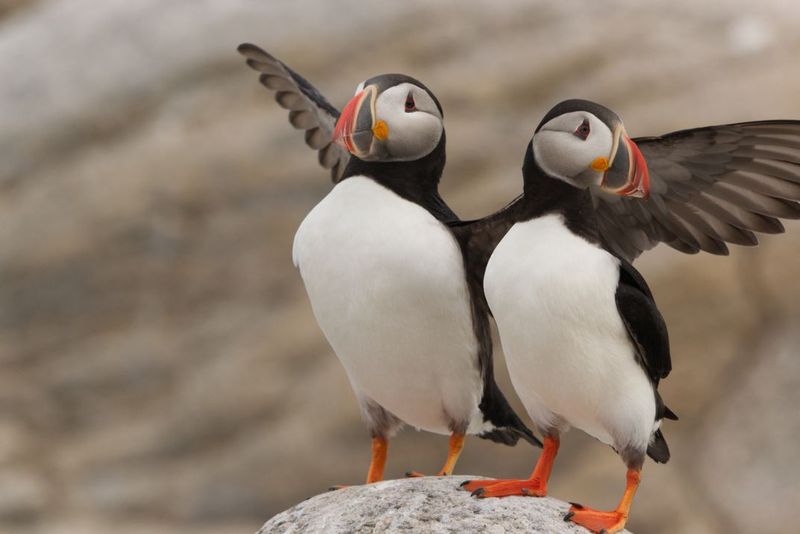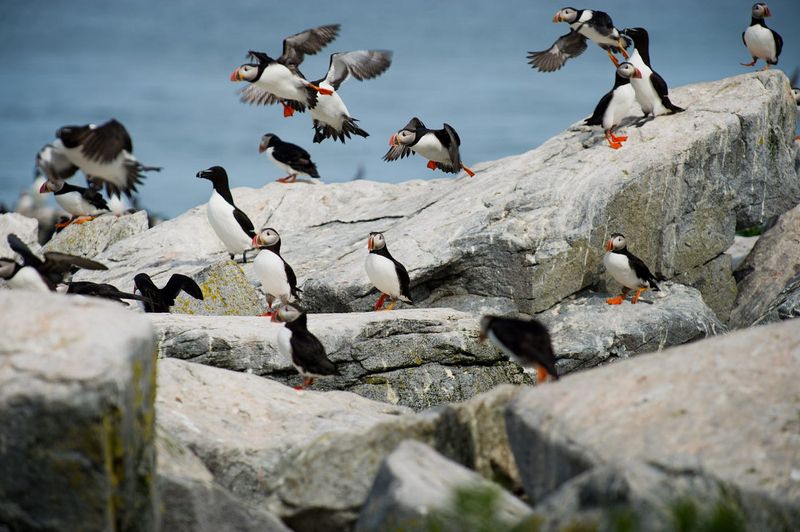They look like flying penguins wearing clown makeup—and they’re ridiculously hard to find. Puffins aren’t just adorable; they’re elusive, mysterious, and fiercely loyal to the wild, windy edges of America. These seabirds don’t do suburbs. They don’t hang out at backyard feeders. They nest where cliffs drop into freezing seas and the fog rolls in like a curtain. If you want to see one, you’ll need timing, luck, and a bit of obsession. Because puffins don’t stick around year-round. For most of the year, they vanish into the open ocean—no phone signal, no tracking device, just waves and instinct. But for a few short months, they return to nest. And that’s when the show begins. Get ready to explore the secret spots—off the coasts of Maine and Alaska—where puffins raise their young, bob in the surf, and occasionally flash that bright orange beak like a tiny, feathered celebrity.
Eastern Egg Rock, Maine

Eastern Egg Rock, a tiny island off the coast of Maine, harbors a vibrant colony of Atlantic Puffins. Each summer, these charismatic birds return here to breed. June through early August is prime time for puffin watching as the island buzzes with activity. The Project Puffin initiative has made this possible, spearheading efforts to reintroduce puffins to this area in the 1970s. Visitors can enjoy boat tours from nearby harbors, providing an excellent opportunity to view puffins in their natural habitat. The island itself, though inaccessible to the public, remains a vital puffin haven.
Seal Island National Wildlife Refuge, Maine

Seal Island, part of Maine Coastal Islands National Wildlife Refuge, is a remote paradise for puffin enthusiasts. The island hosts one of the largest puffin colonies in the U.S. Come mid-summer, thousands of puffins can be observed nesting and feeding. Seal Island is accessible via specialized boat tours that offer close-up views without disturbing these delicate creatures. This conservation success story is a testament to the dedication of wildlife biologists working tirelessly to ensure puffins thrive here. The island is a sanctuary, echoing with the calls of puffins and other seabirds.
Matinicus Rock, Maine

Matinicus Rock, northeast of Matinicus Island, is a beacon for bird watchers. This rugged island hosts a significant number of puffins each breeding season. Early summer is the best time to catch a glimpse of these astonishing birds. Matinicus Rock’s lighthouse, standing sentinel, adds a historical touch to this natural wonder. Puffins can be seen diving for fish, their agility in water contrasting their comical land waddle. The island is part of Maine Coastal Islands National Wildlife Refuge and is an important research site for ornithologists studying seabird ecology.
Petit Manan Island, Maine

Petit Manan Island, known for its picturesque lighthouse, also serves as a nesting ground for Atlantic Puffins. These birds bring life to the island’s rugged shores each spring. Puffin sightings are most common from June to July when the birds are actively nesting and feeding. Conservation efforts have bolstered puffin populations here, with wildlife tours providing a glimpse into their world. The island’s isolation ensures minimal human disturbance, making it a perfect haven for seabird colonies. Visitors can marvel at puffins against the backdrop of the historic lighthouse.
Machias Seal Island, Maine

Machias Seal Island, located at the U.S.-Canada border, is a contested territory but undisputed puffin haven. Known for its dense puffin population, the island offers unique viewing opportunities. Visitors can join tours that allow limited landings, making this one of the few places to walk among puffins. The best time to visit is late spring through summer, when puffins are most active. The island’s rocky cliffs provide a dramatic backdrop as puffins soar and dive. This shared sanctuary emphasizes international cooperation in wildlife preservation efforts.

